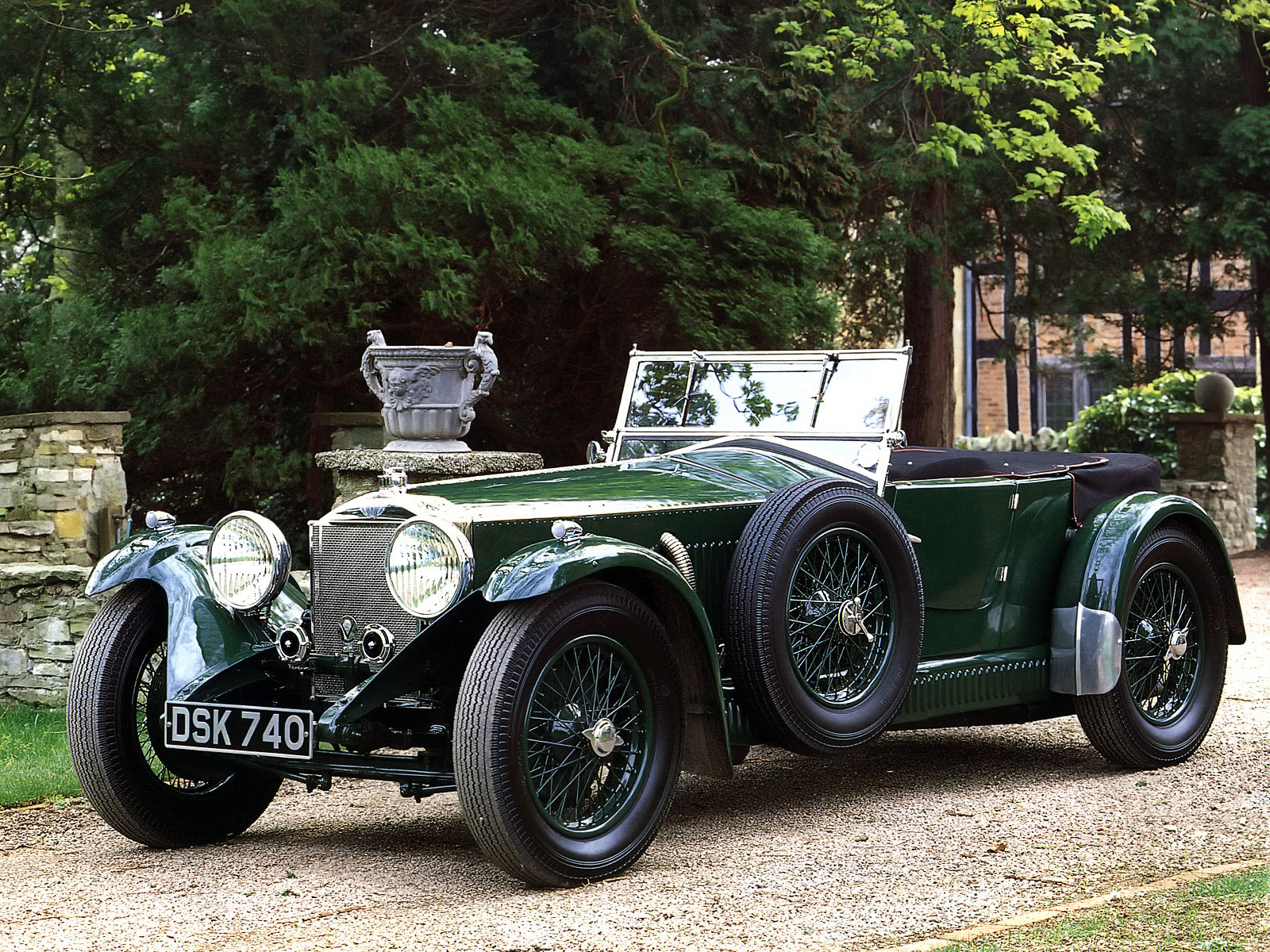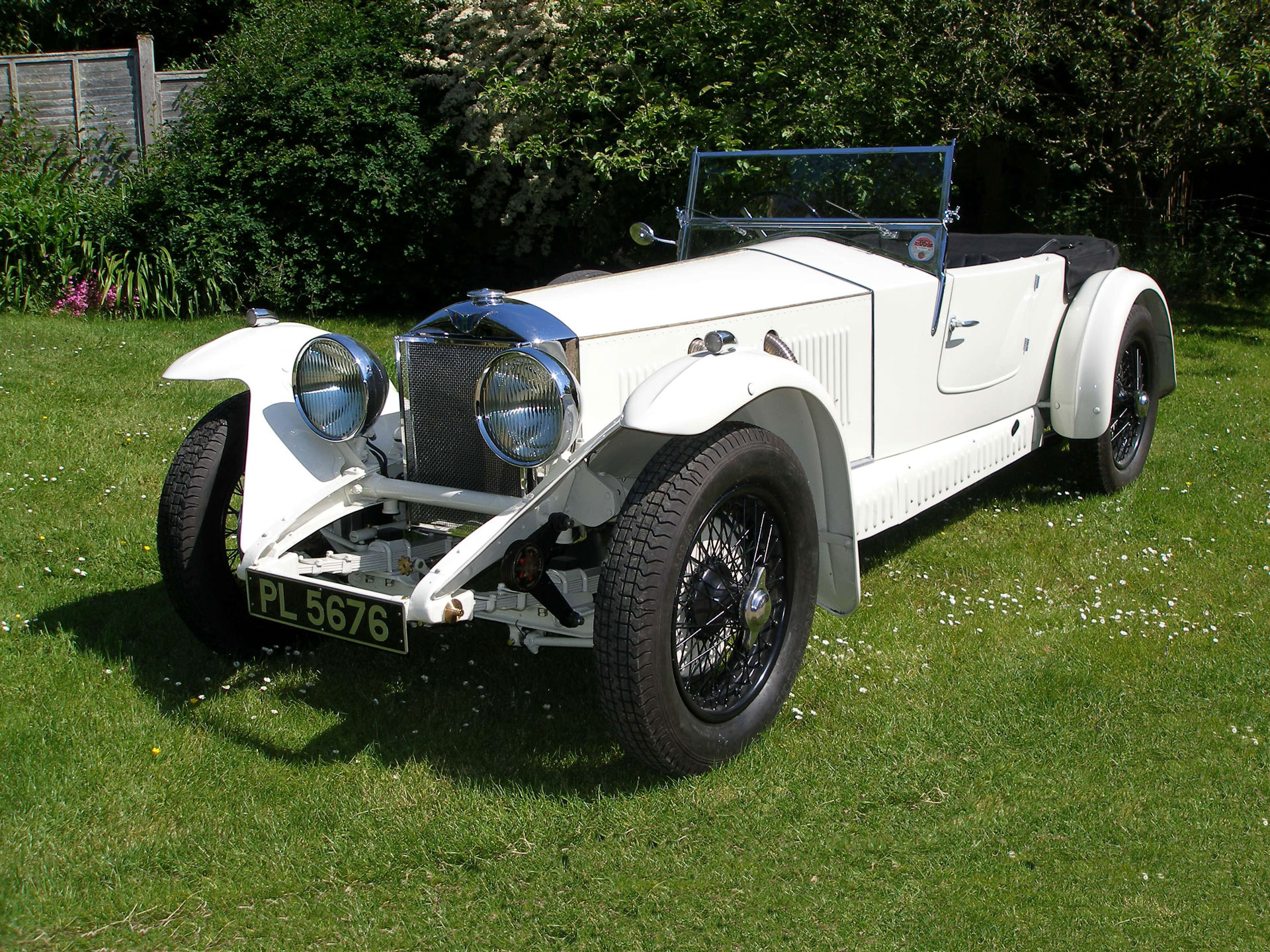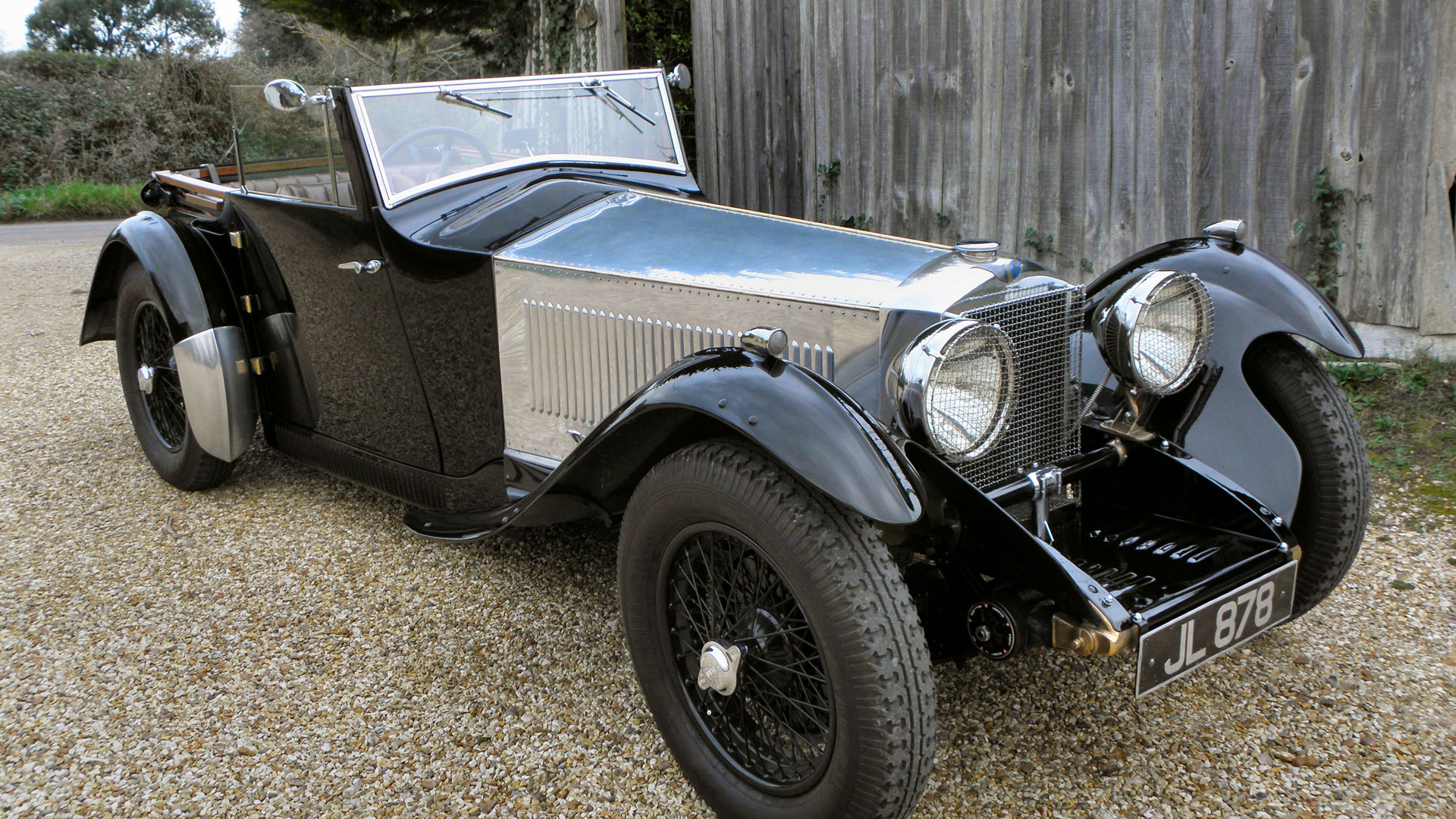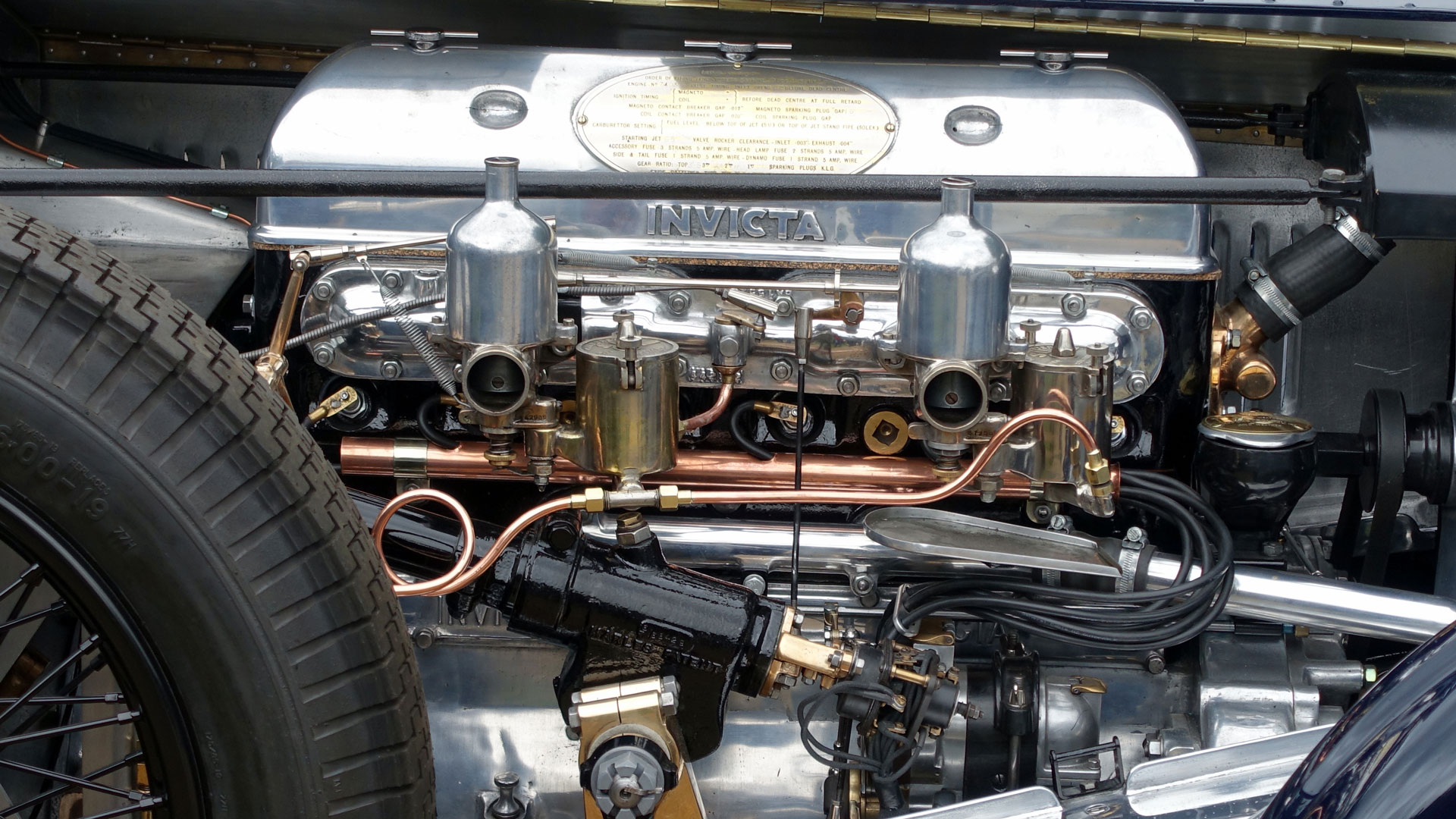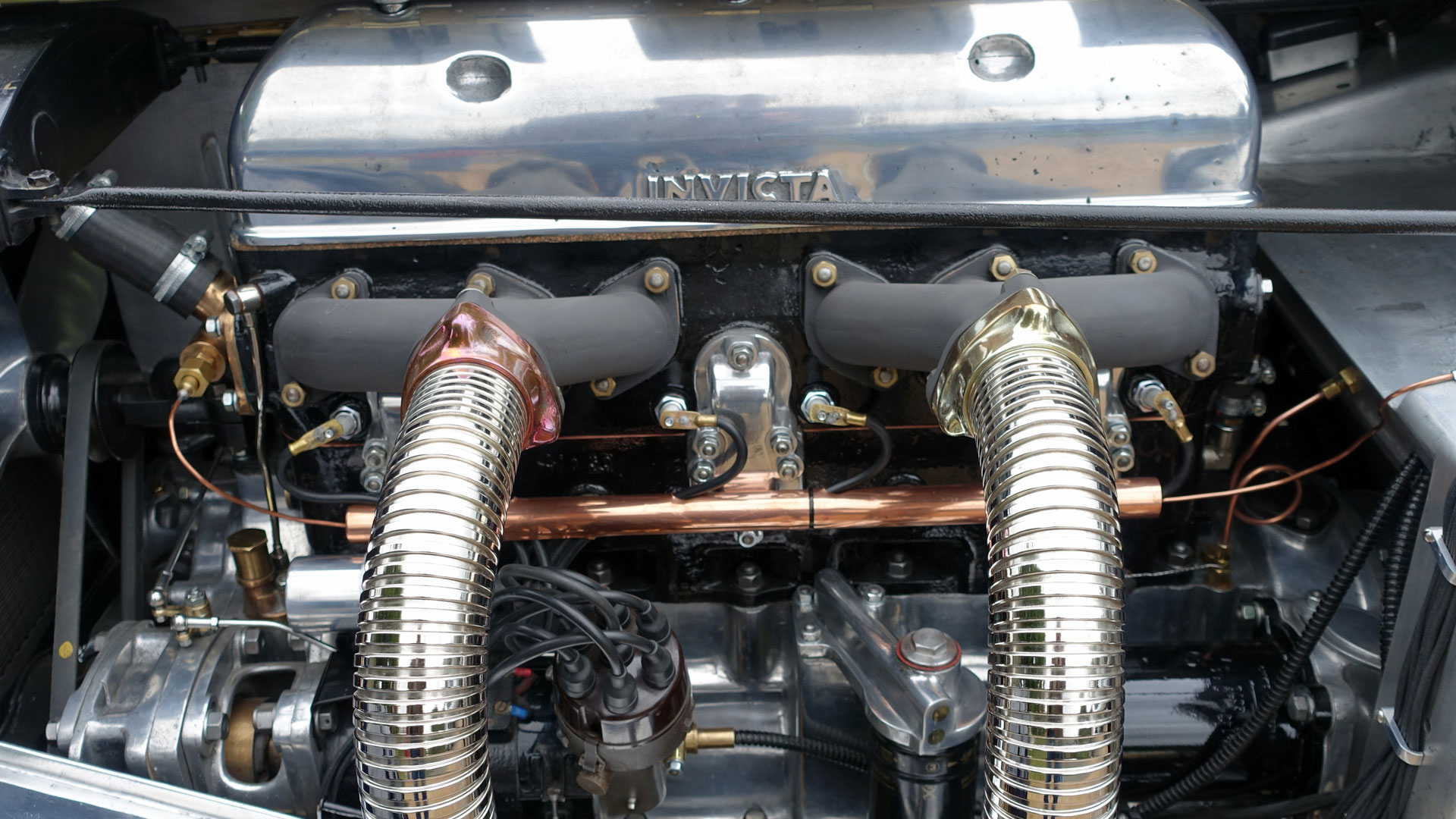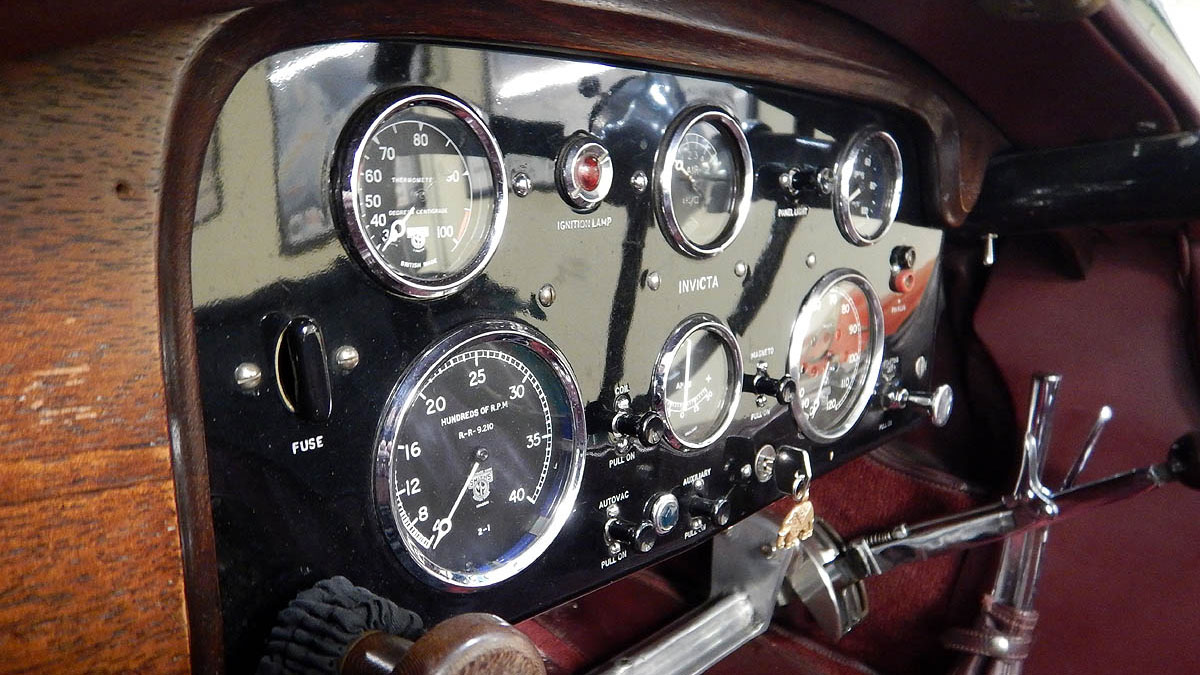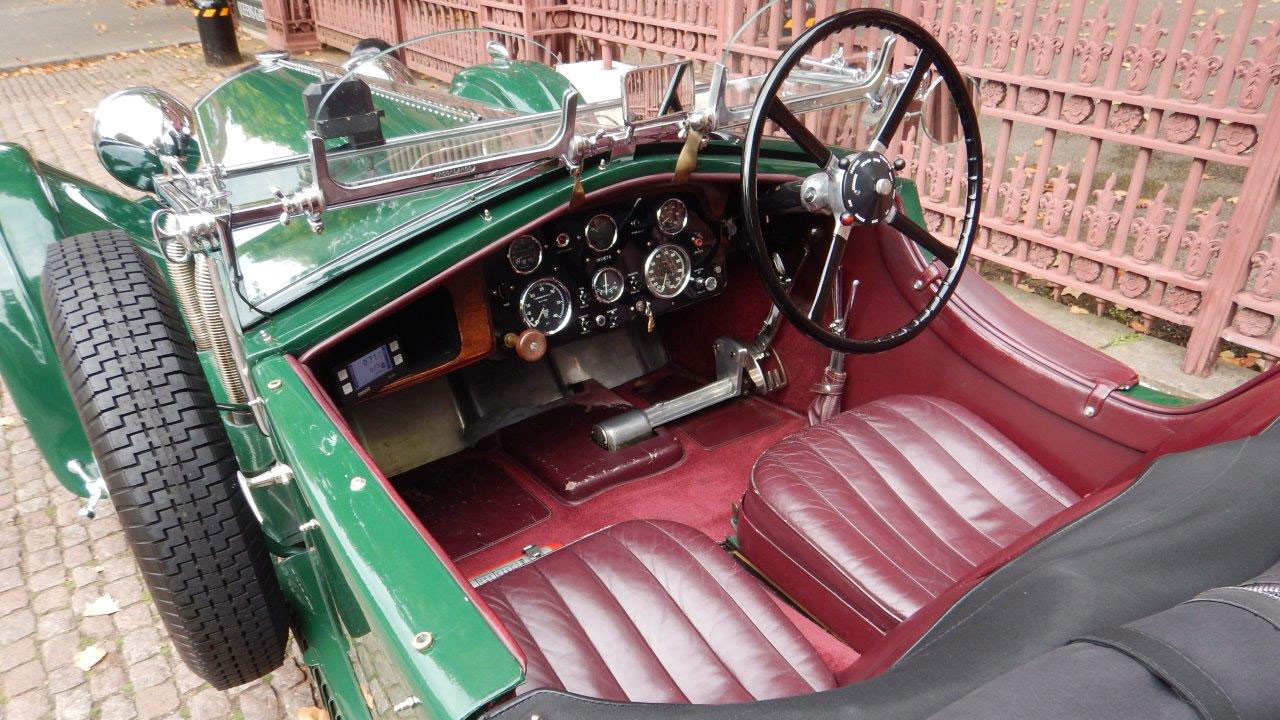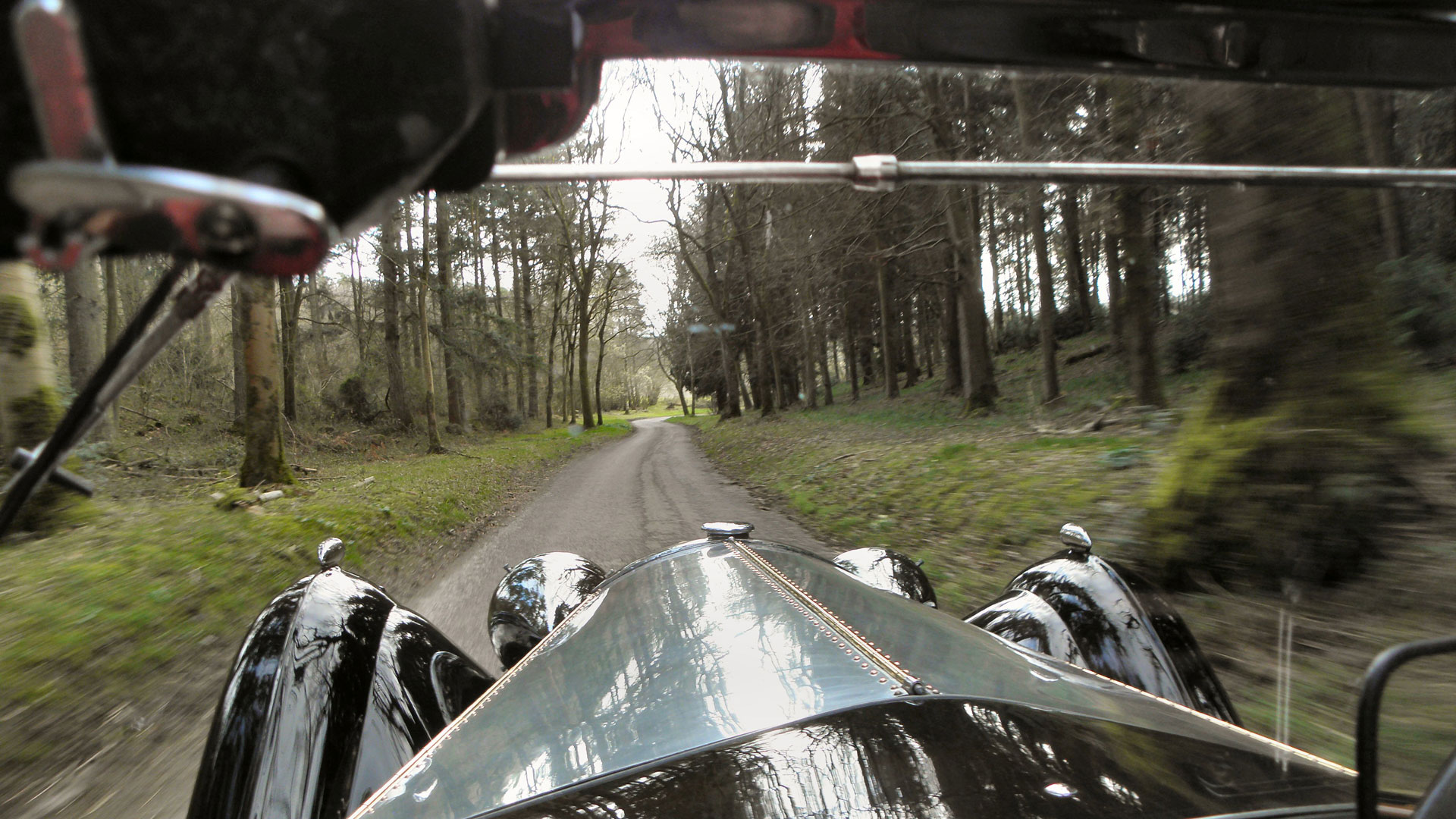Invicta
S Type
Invicta
S Type
For the October 1930 Motor Show a sports version of the A type was introduced. In most respects it was similar to the A type but the chassis frame was underslung under the rear axle. The fixed ends of the springs were located by nibs on the main leaves rather than shackle pins and wheelbase was 9 feet 10 inches.
Fuel was supplied by an electric pump from a 20 gallon slab tank at the rear.
Exhaust downpipes were external with a flexible/articulated chromium plated covering.
About 75 of these cars were made by 1935 and they caused quite a stir by dint of their ultra-low and rakish appearance.
‘The low chassis Invicta was probably the best-looking sports car in the vintage tradition ever to be produced in England. I can think of no contemporary unsupercharged motor-car of similar capacity, made here, which could outperform it – and very few built elsewhere…’ – J R Buckley, ‘The 4½ litre S Type Invicta’, Profile publications, 1966.
About half carried tourer bodies, mostly by Vanden Plas or Carbodies, and had a 3.6 rear axle ratio.
The remainder were drop head coupes or fixed head coupes, by various coachbuilders including Lancefield, Corsica, Freestone and Webb, and Mayfair, and fitted with 3.9 rear axle ratio.
Some of the cars which participated in Invicta Car Club events in the 1930s were named, mainly after ships of the fleet beginning with S, and some cars have been named in more recent times.
ENGINE
Supplied by Henry Meadows of Wolverhampton with six cylinders of 120.64 mm stroke and a bore of 88.5mm, giving a capacity of 4,467cc, in a single iron block casting mounted on an aluminium crankcase supporting a forged crankshaft on four white-metal bearings. Aluminium pistons were carried on H section forged steel connecting rods, with white-metal bearings.
The camshaft, carried in the crankcase, was driven from the nose of the crankshaft by an inverted tooth chain and operated the overhead valves by pushrods. This chain also drove the water pump and magneto whilst the dynamo mounted on the nearside was driven by a similar chain, both being adjustable. The cast iron twin plug cylinder head was of cross flow design with the valves operated by adjustable rockers under an aluminium cover.
Cooling by large centrifugal pump, and extremely efficient honeycomb radiator.
CARBURETTORS
Twin SU HV5 instruments 1 5/8 inch, with a separate starting device.
Fuel was supplied by either hand pump pressurising tank, or automatic petrol pump drawing from a rear-mounted 20 gallon tank. A separate reserve tank for fuel and oil was carried on the bulkhead.
CLUTCH
Meadows single plate clutch with steel-driven plate and friction material riveted to the flywheel and pressure-plate. The design incorporated an adjustable clutch stop.
GEARBOX
Meadows type 8A in unit with the engine with right hand gear change. Four forward speeds and one reverse.
REAR AXLE
Banjo type enclosing special spiral cut bevels and very large diameter half-shafts for strength. Ratios 2.9, 3.6, 3.9
FRONT AXLE
Steel H section of exceptionally strong and heavy construction.
BRAKES
Rod-operated on all four wheels. Separate rear shoes for the handbrake. Ribbed cast-iron drums of 14 inch diameter with aluminium cooling fins.
SUSPENSION
Semi-elliptic 2 ¼ inch wide springs located in special fixed bronze trunnions at inner ends and bronze sliding trunnions at outer ends, with damper leaves above main leaves (on some cars the trunnion casings were cast steel) Hartford friction dampers all round, in conjunction with Luvax units (although some cars were only fitted with Luvax)
STEERING
High geared steering was by Marles with eighteen inch diameter steering wheel.
WHEELS AND TYRES
Rudge Whitworth wire wheels. Tyres were 5.50 / 6.00 x 19.
ELECTRICAL EQUIPMENT
Starter and three brush dynamo by Rotax. Dashboard instruments included speedometer, rev counter, ammeter, oil gauge, water temperature gauge, ignition witches, lamp and charging switch and socket for inspection lamp. All were Smiths instruments. Two headlamps, two sidelights and a stop and tail lamp.
CHASSIS FRAME
Channel section, 6 inches by 2 inches, upswept over front axle, and underslung under rear axle. Wheelbase 9 feet 10 inches, with track 4 feet 8 inches.
Guarantee 12 months.
